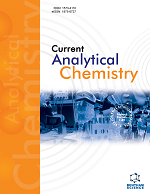
Full text loading...

In this study, aiming to solve the problem of difficult recovery of powder catalysts in the treatment of antibiotic wastewater by photocatalytic technology, titanium dioxide nanotubes (TiO2 NTs) photoelectrodes were prepared on titanium sheet substrates by anodic oxidation method.
The precious metals Pd and Ag were introduced to be co-deposited, which realized the effective transfer of photogenerated electrons between the semiconductor and the precious metals and remarkably improved the photoelectrocatalytic activity of the photoelectrodes.
The experimental results showed that the prepared Pd/Ag/TiO2 NTs composite photoelectrode achieved a removal efficiency of 79.51% for tylosin (TYL) within 240 min, which was significantly better than that of the pure TiO2 NTs (1.42-fold) and Ag/TiO2 NTs (1.05-fold) photoelectrodes. Electrochemical analyses demonstrated that the loading of Ag and Pd on the surface of TiO2 NTs can effectively promote the transport and separation of photogenerated charge carriers, thus improving the photoelectrocatalytic performance. In addition, the degradation process of TYL and the dynamic changes of intermediates were deeply analyzed with the help of three-dimensional fluorescence spectroscopy (3D EEMs) and two-dimensional correlation spectroscopy (2DCOS) techniques.
This study provides not only an expanded application of solid catalysts in photoelectrocatalytic treatment of antibiotic wastewater but also new insights for further investigation of the co-deposition of precious metals to improve photoelectrodes.

Article metrics loading...

Full text loading...
References


Data & Media loading...
Supplements